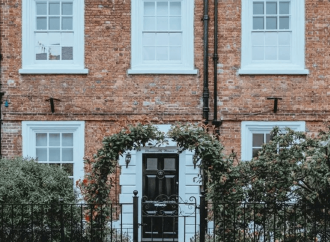7 Simple Steps to Self-Build Mortgages
Self-build mortgages are somewhat different to a regular mortgage. The main difference being that the cash is released in stages rather than an upfront amount of borrowing.
There are two types of self-build mortgages: arrears & advanced. Both of which have classifiable stages of how, or when, cash is released, from the first hole dug to the final screw fixed. If you’ve ever seen Grand Designs, you’ll probably have a better understanding of how it can work. Whenever Kevin McCloud revisits the build, the plot owners are usually fretting about the delivery of their windows or new roof and the freeing up of the next installment of cash to pay for it all. The securing of the roof and fitting of windows is known as the ‘wind and watertight’ stage and, in some cases, the mortgage lender will only release funds to complete this phase of the build, once the last phase has been approved. Although, if you’re still confused, or if you’ve never seen Grand Designs, it’s probably wise to read on.
Choosing the right Self-Build Mortgage
#1. Arrears
As the more traditional choice of a self-build mortgage, this is a scenario most familiar to the masses. In this case, the lender will release money to buy the plot. Typically, this will be between 50% to 80% of the purchase price or value of the land. However, by completing the application process and receiving an offer, it is likely that you will have already paid some processing fees. The offer will usually be broken down into around 5 stages, with a previously agreed timetable. Once these stages have been completed, and assessed by a surveyor, the monies will be released to continue the project. The stages in question are usually along the lines of: Stage 1 – Purchase & Foundations Stage 2 – Wall Plate Stage 3 – Wind & Watertight Stage 4 – First Fix Stage 5 – Second Fix & Completion An arrears self-build mortgages tends to suit builders with relevant skills and enough savings to fund the early stages of the build and the initial deposit. For instance, if you’re already the plot owner and are opting to remortgage it to free up the funds to begin the build, or if you have sold an existing property and have cash available, then an arrears mortgage will suit you perfectly.
#2. Advanced
This is the ideal self-build mortgage alternative, for those who have less finances to begin with. This option guarantees advancements of money (getting the money before each phase, rather than after), therefore there is a more thorough process in determining the cost of the project before commencement. The added scrutiny means that you will know exactly what sums you’ll be receiving and when. A detailed cash flow is generated which identifies who or what needs to be paid and when. This is helpful if you’re planning to use products that are going to be manufactured for you in a factory prior to assembly, because you know you can pay a deposit upfront which often is a condition of the manufacturer. Additionally, because of the extra diligence involved, lenders may be more generous with the total percentage of funds they will release. Often, this can be around or above 80% of the valuation. But, to do this, the lenders will ask you to make a single payment for the ‘funding gap’, as insurance for their extra exposure.
What do lenders look for?
#3. Affordability
Like any lender, ahead of any mortgage, they will always assess your financial situation and the affordability of the deal. You will be required to demonstrate that you have sufficient finances in place, or a regular income, which will cover the cost of the repayments. Expect to provide evidence of earnings, or combined earnings, if you’re making a joint application.
#4. Security
An on-site valuation of the land or properties will provide an added security, in terms of assets ahead of the lender parting ways with any money.
#5. Planning Consent
Any ‘land’ must come with planning consent and abide by detailed planning permissions (DPP) or outline planning permission (OPP) and must be approved well in advance of the construction phase.
What else is there to consider?
#6. Valuations
With regards to arrears self-build mortgages, be cautious that the time it takes between a valuation and physically receiving your money can be of considerable length. Also, the surveyor’s valuation may differ from the actual costs of the works for you. Often, something like the foundation works can cost a lot more than the amount you are set to receive before or after this phase. That’s why those who have the added security of spare cash opt for this sort of self-build mortgage because they can draw upon extra finances, should they need to.
#7. Deposits
A lot of lenders will require deposits of up-to and around 30%, depending on individual circumstances. Understandably, self-build mortgages are seen as high risk, therefore lenders like to have the added security.
How MortgageKey can help with a Self-Build Mortgage
The most important aspect of any self-build is to enjoy the planning and building of your very own grand design! You don’t want to be bogged down with all the rules, regulations and restrictions a self-build mortgage can impose, so that’s where we come in. With the necessary know-how, experience and expertise, we can find the right deal for your personal circumstances. Contact us today for a free quote with no obligation or visit our Self-Build Mortgages page to find out more.
Latest Guides
 House Purchase
House Purchase
8 Iconic Christmas Movie Homes – How much they cost today & their estimated mortgage rates
For millions... Read More
 Buy to Let
Buy to Let
The 5 most FAQ’s about Tax on a Buy to Let Property
Unsurprisingly, when tackling the topic of tax, everybody wants to know how to either pay less... Read More
 Remortgaging
Remortgaging
What Information Do I Need To Remortgage?
At MortgageKey, our mortgage advisors are expertly placed to assess your circumstances and... Read More
 Let to Buy
Let to Buy
The Benefits of a Let to Buy Mortgage
Moving home but don’t want to sell? A Let to Buy Mortgage could be the option for... Read More
Think Carefully Before Securing Debts Against Your Property.
Your Home Maybe Repossessed If You Do Not Keep Up With Your Repayments.

Ready to talk? Speak to an expert today: 0800 077 8980

